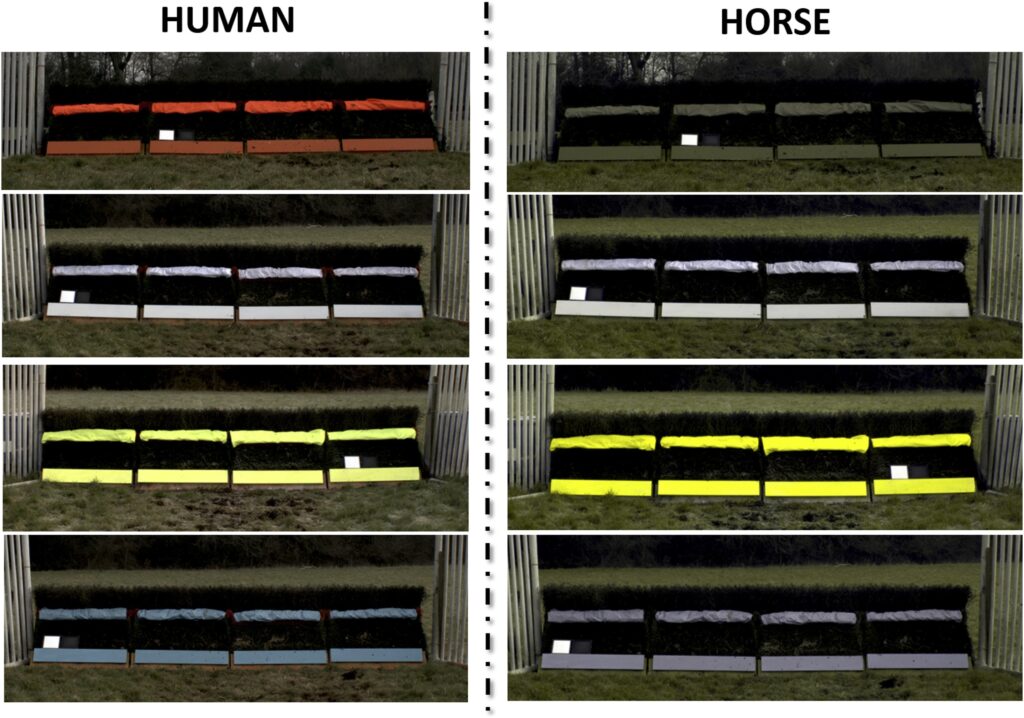In preparation for a busy new season at Stratford, the racecourse is pleased to be at the forefront of improvements in horse welfare, following the implementation of an exhaustive research project by the University of Exeter, in partnership with the sport’s governing body, the British Horseracing Authority.
From the opening fixture on Monday March 14, take-off boards and fence and hurdle sight boards will change in colour from fluorescent orange to white. The research, concluded in 2020, found that horses have reduced colour vision compared to humans, seeing colours along a continuous range from blue to yellow, and therefore cannot distinguish between many of the colours that humans see as red, orange, and green. What originally appeared to be an excellent idea to paint the take-off boards bright orange has in reality been of little help to the horse.
The research was carried out at 11 racecourses in a variety of different lighting conditions between February 2017 – 2018, and included trials with horses at training grounds too. Fence colour significantly affected the way a horse jumped the fence with regards to its takeoff and landing distances, and the angle of takeoff that a horse made during a jump. The colour of the fences plays a role in both the shape that the horses made whilst jumping a fence and the total distance jumped.

Speaking to the Daily Telegraph, trainer Richard Phillips reported, “To start with we were slightly dubious about the whole concept but the evidence was quite striking. To both the riders and those on the ground the horses seemed to jump the obstacles with white rails more fluently and with more precision than they did the orange obstacles.”
Over the space of a 12 month period, equine casualty records over the last five years have consistently indicated an annual average of 176 fatalities in racing at large, predominantly, but not exclusively, due to jumping errors. BHA has successfully reduced faller rates through a combination of means, including managing field sizes, altering distances or starts to accommodate the distance to the first obstacle and through better monitoring of licensed personnel. There is no zero option here in a sport as fast and unpredictable as Jump racing, but the Exeter University research maintains a downward momentum on injury rates through a remorseless focus on safety, without sanitizing the sport.
The research, overseen by BHA’s Senior Course Inspector Richard Linley, who has extended experience of race-riding in a highly successful career as first jockey to the Rimells, has some relevance to other equestrian sport too.
One fall is a fall too many, but if this seemingly innocuous change reduces risk without diminishing the spectacle, then the sport and all its followers are winners.
